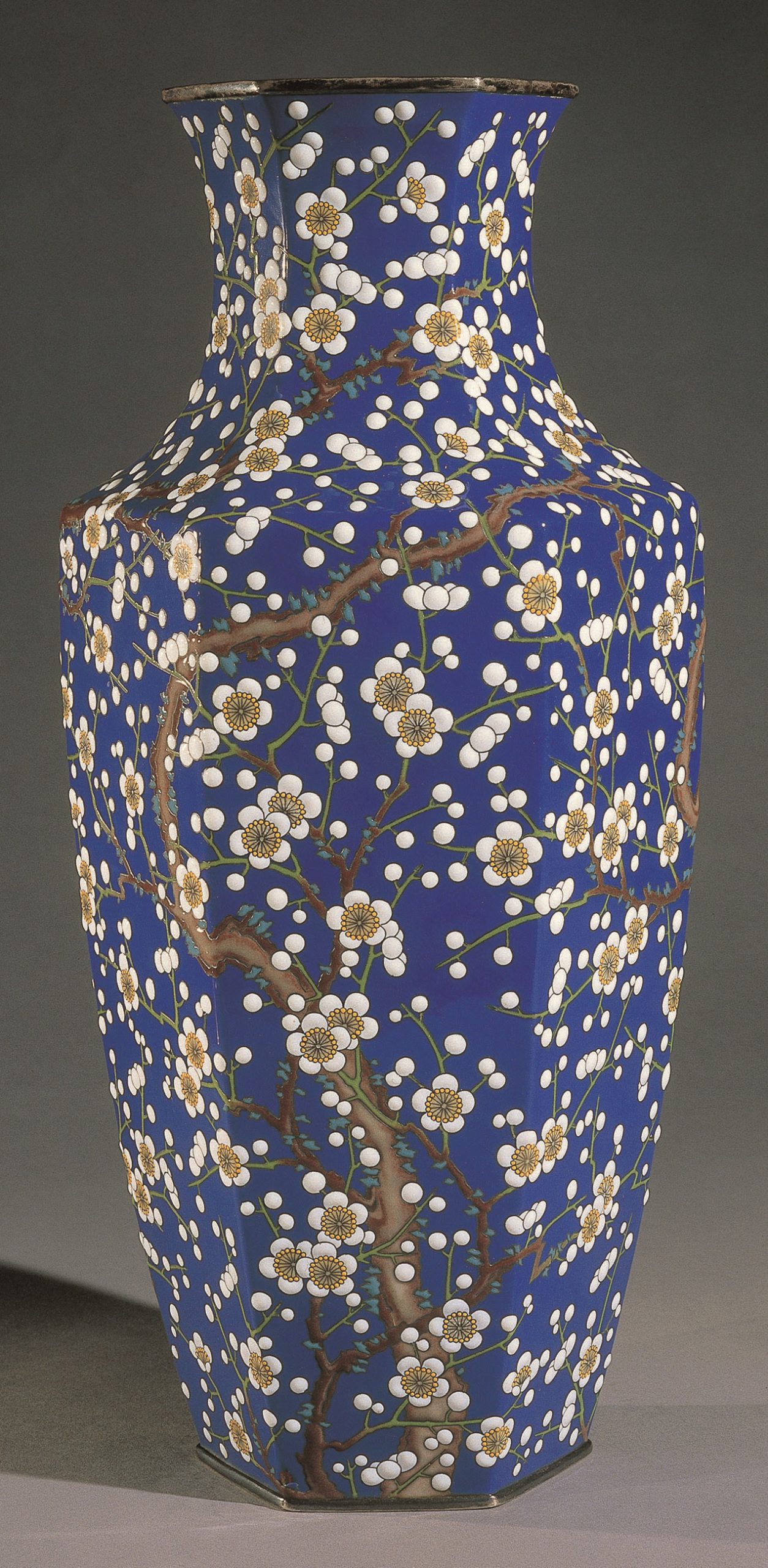 Print Page
Print Page
 Print Page
Print Page
Location: Japan, Nagoya
Materials: moriage enamel, applied with silver mounts
Dimensions: height 40.2 cm
Accession Number: E 28
Other Notes:
A moriage enamel vase, the shouldered body of tapering hexagonal form decorarted in quasi-Chinese style with a profusion of white prunus-flowers upon green and brown twigs and branches on a royal blue ground. Applied with silver mounts.
A pair of vases of similar design were included in the Louisiana Purchase Exposition of 1904, illustrated in the catalogue, p.80. Others on a dark green ground were exhibited by Kawade at the Universal and Internatinal Exposition of 1905 in Liège, and are illustrated in the ensuing auction catalogue, lot 475 (see commentary on E 40).
It is worth speculating on the nature of the relationship between Ando Jubei and Kawade Shibataro: were they partners, or did the one employ the other? Why did Kawade sometimes sign his work alone, as here, sometimes with both names, and obviously (but without external corroborating evidence) sometimes with Ando’s name alone? Was Kawade a craftsman/artist and Ando the entrepreneur? That Kawade was not the only craftsman/artist in the Ando Company is clearly shown by E 31, which could not be by Kawade as he is not known to have worked in that traditional style. The vase E 42, signed by Ando, was exhibited under his name in the Japan-British Exhibition of 1910 in London, but in the Japanese edition of the catalogue the vase is listed as the work of Kawade.
Bibliography:
O. Impey, M. Fairley (eds.), Meiji No Takara: Treasures Of Imperial Japan: Enamel, London 1994, cat. 40.
J. Earle, Splendors of Imperial Japan: Arts of the Meiji period from the Khalili Collection, London 2002, cat. 250, p. 353.
